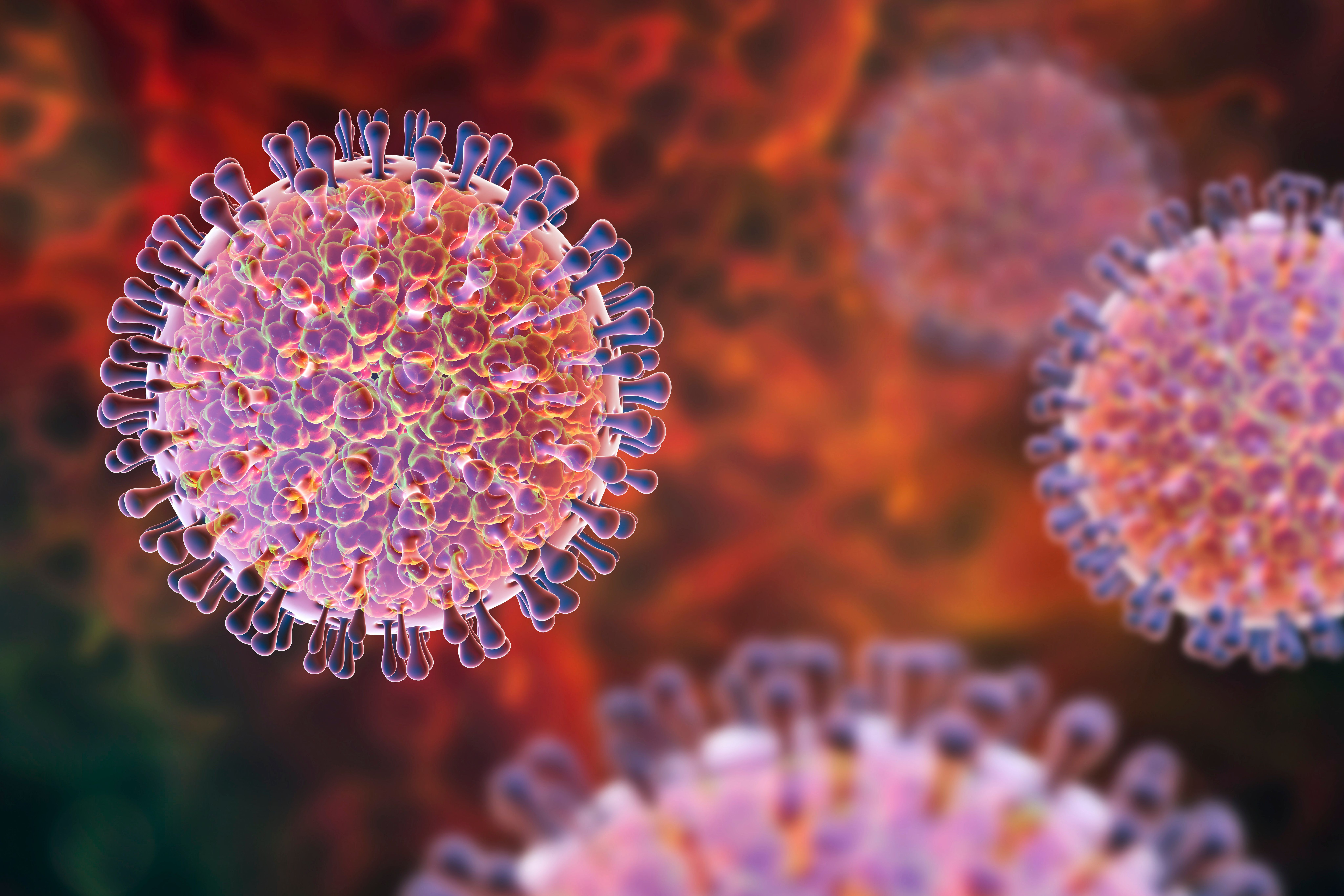Low-cost, Sensitive SERS Substrate to Detect Rotavirus in Clinical Stool Samples
A new study has developed a low-cost, sensitive SERS substrate using silver nanoparticle functionalized paper for the detection and analysis of rotavirus in clinical stool samples.
Led by Pabitra Nath, researchers at Tezpur University in India have developed a low-cost surface-enhanced Raman scattering (SERS) substrate that can detect rotavirus in clinical stool samples. The team fabricated the SERS substrate by drop-casting silver nanoparticles onto a printing-grade paper. They extracted rotavirus particles from clinical stool samples and confirmed their presence using various techniques including enzyme-linked immunosorbent assay (ELISA), polymerase chain reaction (PCR), and sequencing. The Raman signals from the paper-based SERS substrate significantly enhanced the characteristic Raman peaks of the rotavirus particles in solution.
Rotaviruses. Molecular model of a rotavirus which causes diarrheal infection in children. 3D illustration | Image Credit: © Dr_Microbe - stock.adobe.com

Surface-enhanced Raman scattering (SERS) is a technique that enhances the Raman signal by orders of magnitude using a roughened or nanostructured metallic surface. When light interacts with the metallic surface, it produces localized surface plasmon resonances (LSPRs), which amplify the electromagnetic field and enhance Raman scattering of nearby molecules. SERS enhances the Raman signal in two ways: by increasing the excitation laser field intensity, and by enhancing the Raman scattering of molecules adsorbed on or near the metallic surface. SERS is highly sensitive, with the ability to detect molecules at the femtomolar level, making it a useful tool in various fields such as chemistry, biology, and material science. The SERS effect is influenced by several factors, including the size and shape of the metallic substrate, the wavelength and polarization of the incident light, and the distance between the molecule and the metallic surface.
The proposed SERS substrate is highly sensitive and can detect rotavirus samples with a concentration as low as 1% using a Raman spectrometer. This cost-efficient platform may find applications in other research and clinical laboratories as well.
Rotavirus is the leading cause of severe diarrhea in children worldwide, and early detection is critical to prevent its spread. The study, published in Spectrochimica Acta Part A: Molecular and Biomolecular Spectroscopy, highlights the potential of this SERS substrate for rapid, low-cost, and sensitive detection of rotavirus in clinical settings (1).
This research demonstrates the potential of SERS technology for the detection of rotavirus, which is a critical public health issue. This low-cost, simple and effective method has the potential to be a game-changer for the detection of rotavirus and other viral infections in clinical settings.
Reference
(1) Biswas, S.; Devi, Y. D.; Sarma, D.; Hatiboruah, D.; Chamuah, N.; Namsa, N. D.; Nath, P. Detection and Analysis of Rotavirus in Clinical Stool Samples Using Silver Nanoparticle Functionalized Paper as SERS Substrate. Spectrochim. Acta A Mol. Biomol. Spectrosc. 2023, 295, 122610. DOI: 10.1016/j.saa.2023.122610
AI-Powered SERS Spectroscopy Breakthrough Boosts Safety of Medicinal Food Products
April 16th 2025A new deep learning-enhanced spectroscopic platform—SERSome—developed by researchers in China and Finland, identifies medicinal and edible homologs (MEHs) with 98% accuracy. This innovation could revolutionize safety and quality control in the growing MEH market.
AI-Driven Raman Spectroscopy Paves the Way for Precision Cancer Immunotherapy
April 15th 2025Researchers are using AI-enabled Raman spectroscopy to enhance the development, administration, and response prediction of cancer immunotherapies. This innovative, label-free method provides detailed insights into tumor-immune microenvironments, aiming to optimize personalized immunotherapy and other treatment strategies and improve patient outcomes.
New AI-Powered Raman Spectroscopy Method Enables Rapid Drug Detection in Blood
February 10th 2025Scientists from China and Finland have developed an advanced method for detecting cardiovascular drugs in blood using surface-enhanced Raman spectroscopy (SERS) and artificial intelligence (AI). This innovative approach, which employs "molecular hooks" to selectively capture drug molecules, enables rapid and precise analysis, offering a potential advance for real-time clinical diagnostics.
Best of the Week: Chewing Gum with SERS, Soil Carbon Analysis, Lithium-Ion Battery Research
January 17th 2025Top articles published this week include a Q&A interview that discussed using surface-enhanced Raman spectroscopy (SERS) to investigate microplastics released from chewing gum and an article about Agilent’s Solutions Innovation Research Award (SIRA) winners.